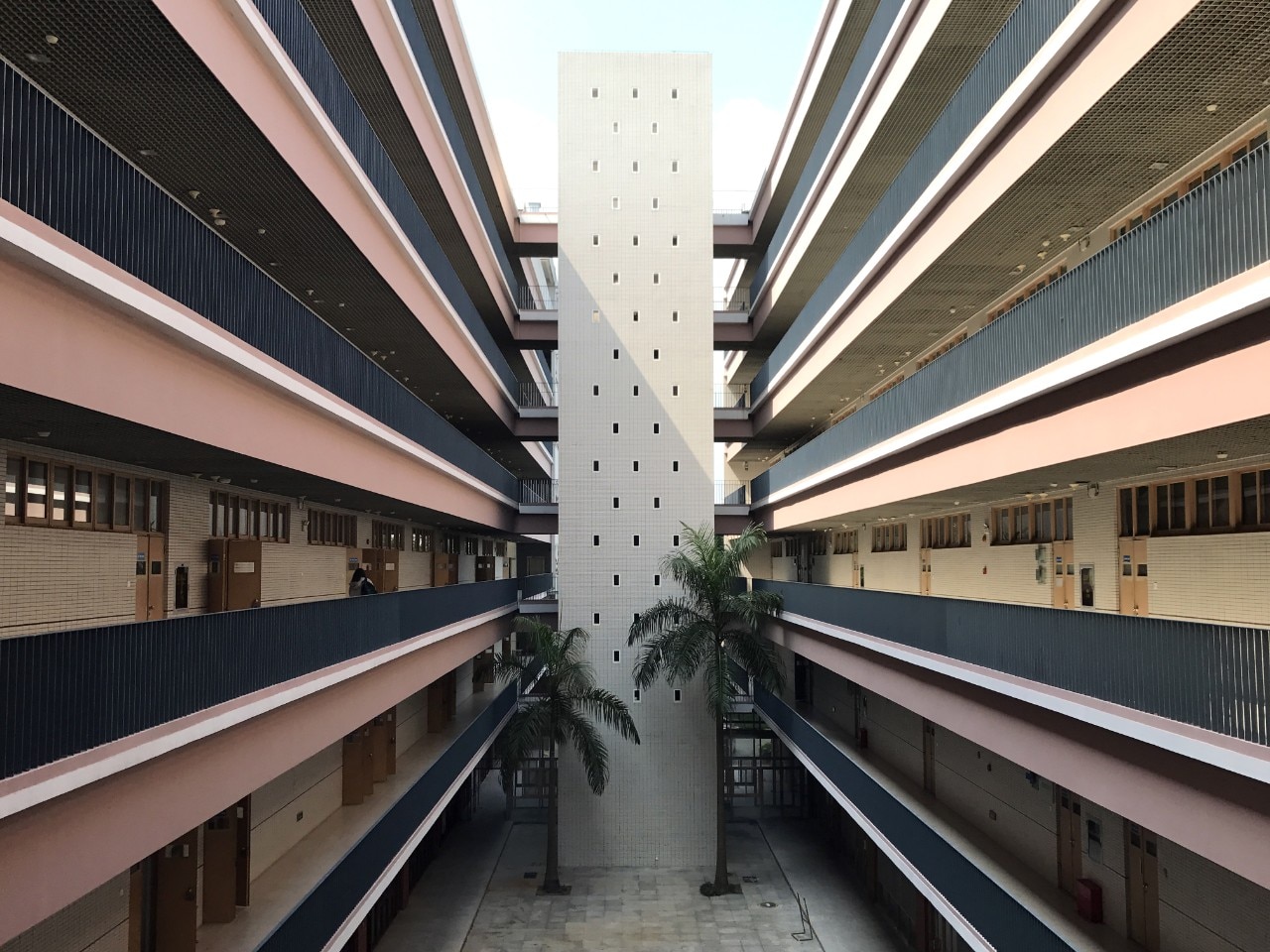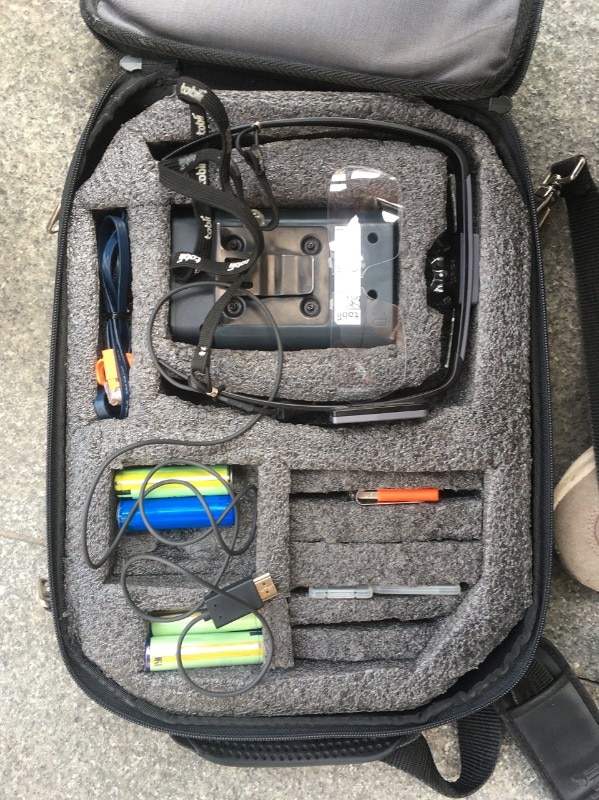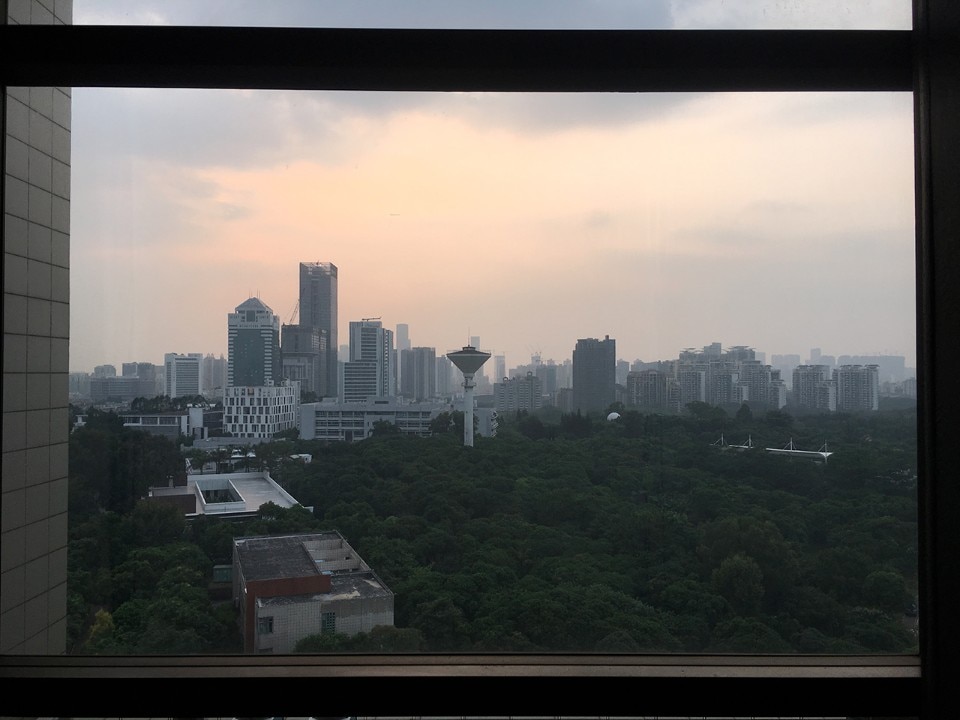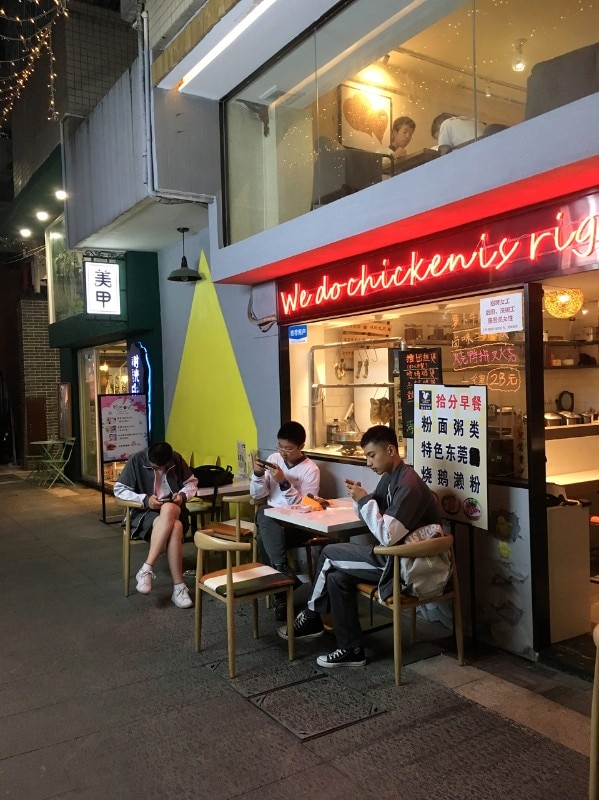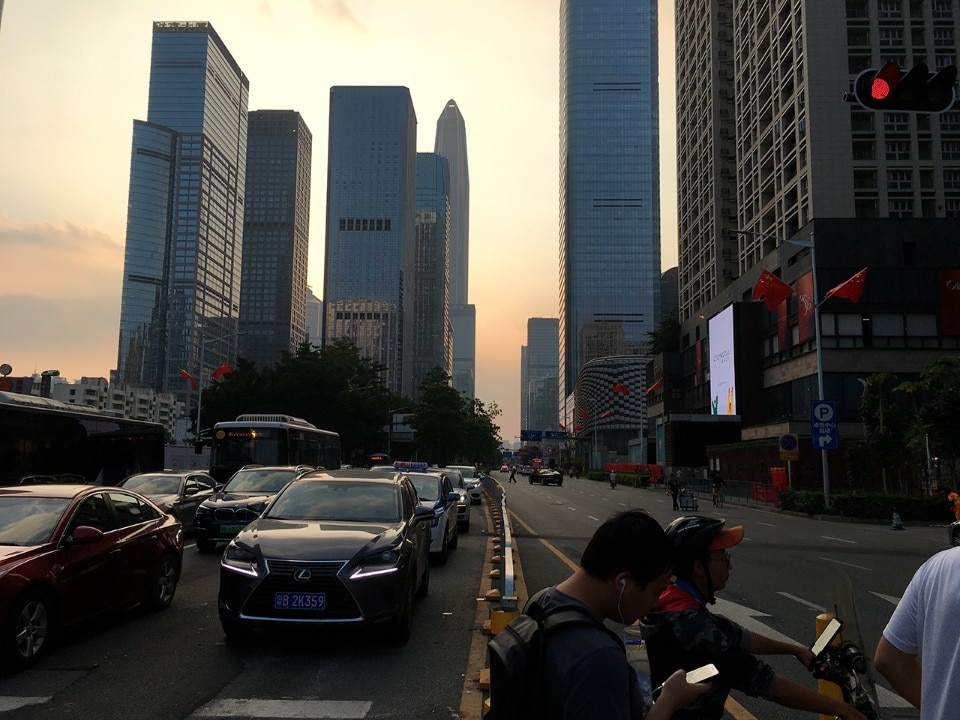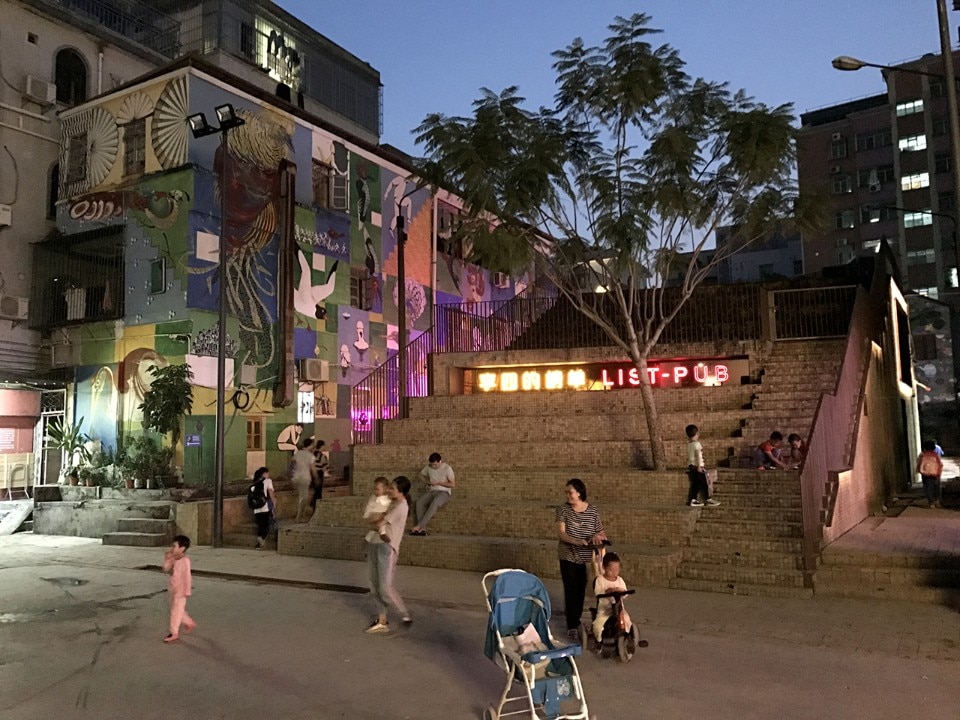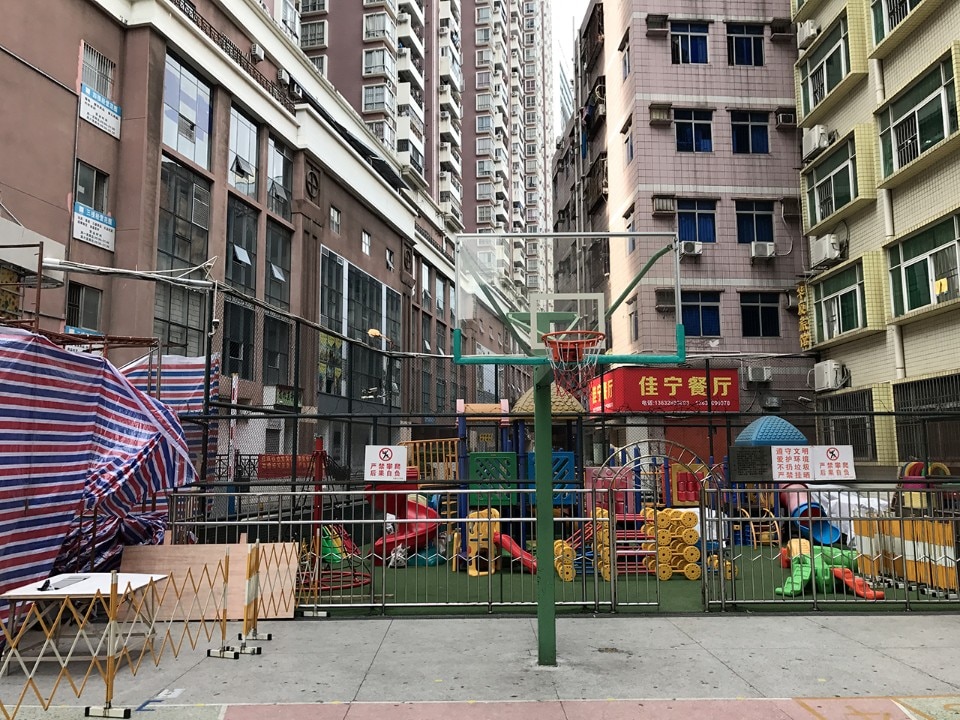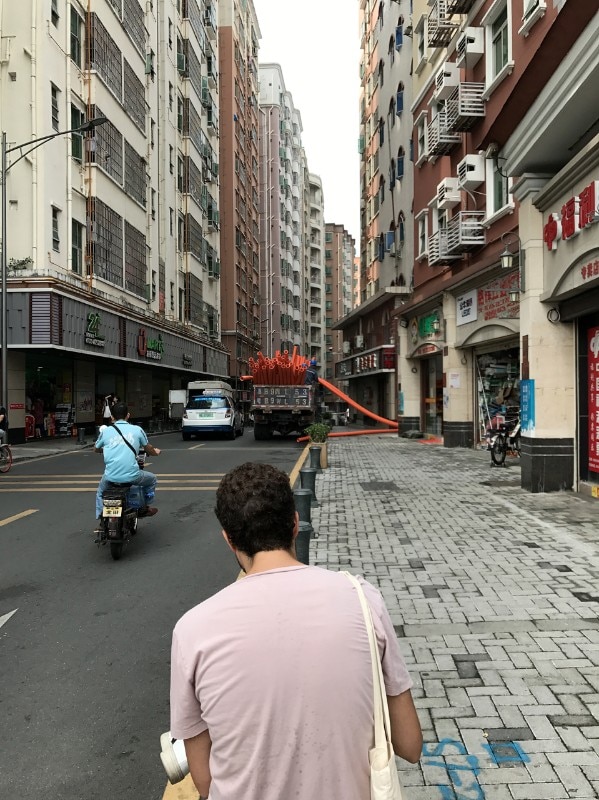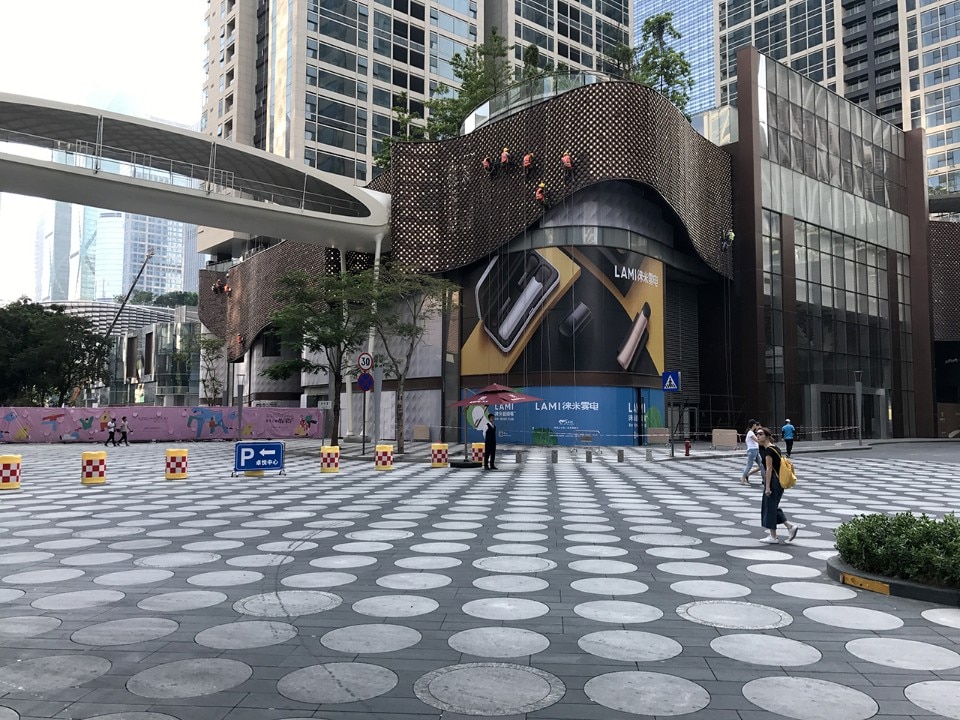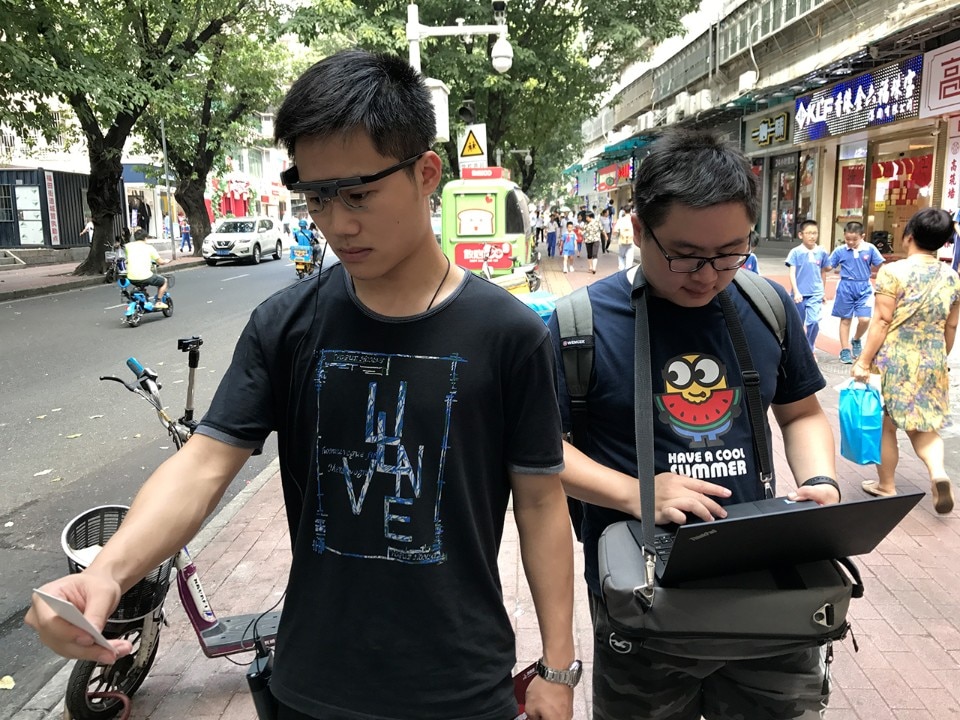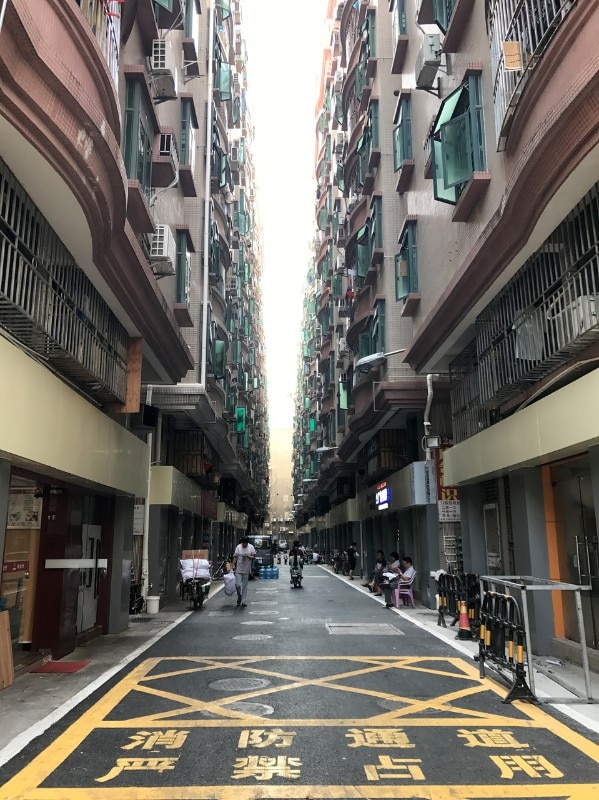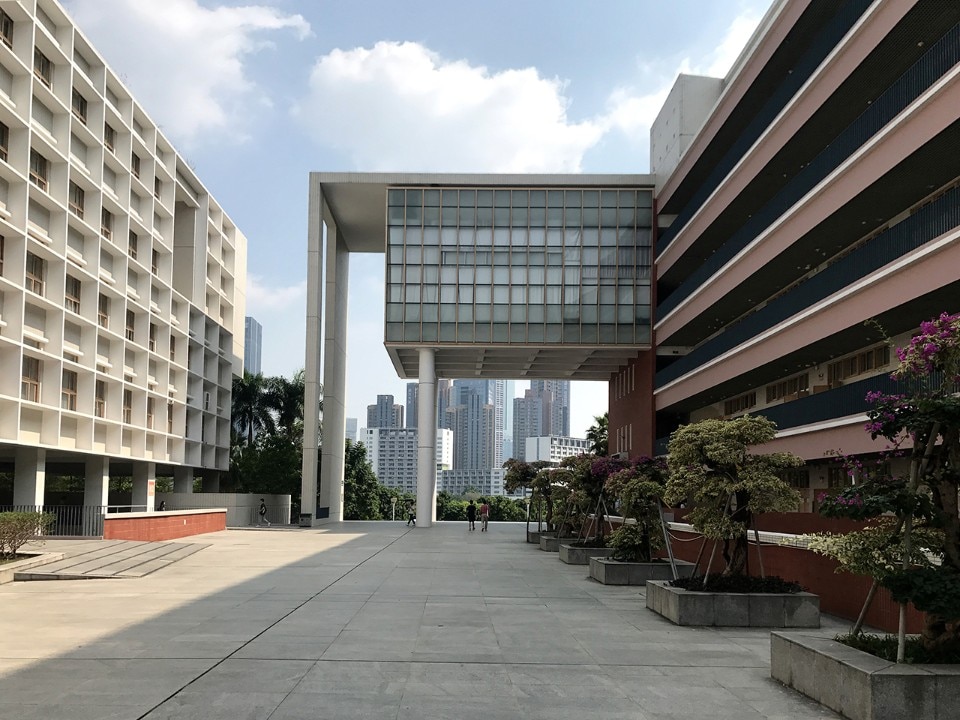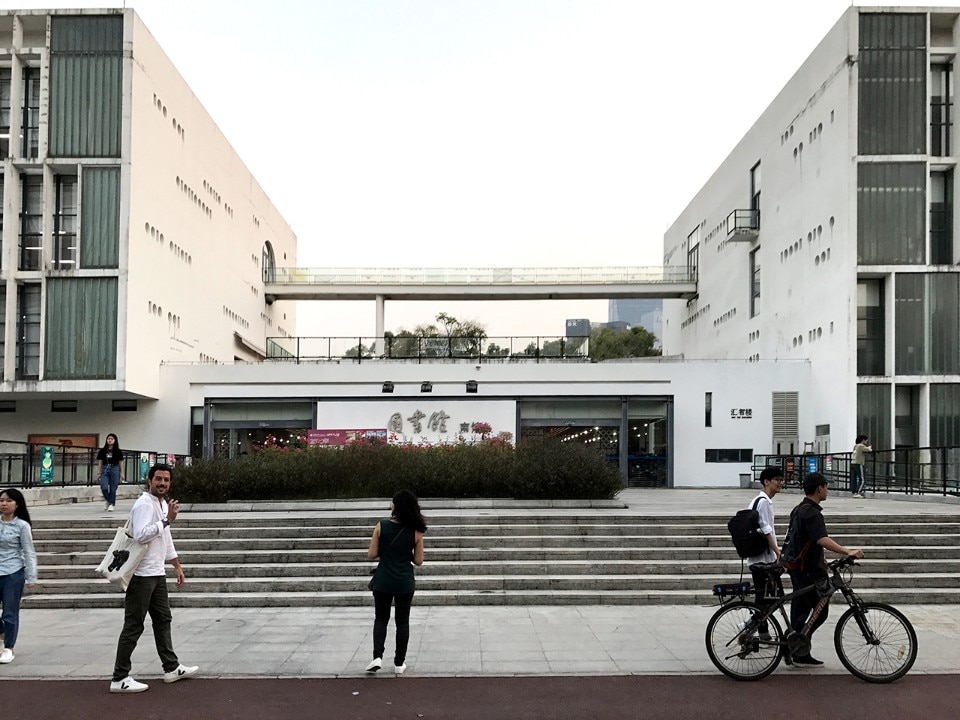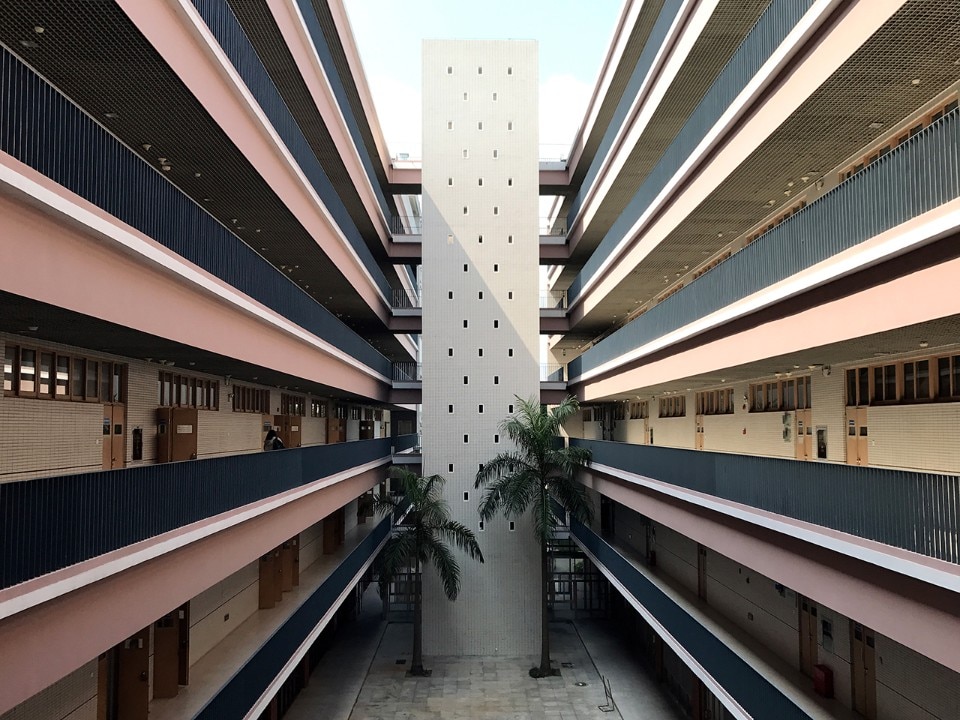Presented during the Shenzhen Biennale 2019 curated by Carlo Ratti (UABB, Bi-City Biennale of Urbanism\Architecture of Shenzhen and Hong Kong), “Living Shenzhen” - “Eyes of the city” is a complex research by WAR on new possible methods for city mapping, that will be on show for 72 hours in Rome. The goal is to design the urban space in a way that responds to the real needs of citizens: it is the latter, in fact, who observe, film and finally map their daily routes – voluntarily and actively – through ‘smart glasses’ whose data is used locally with community and no-profit objectives. We are therefore talking about a ‘positive’ technology useful to urban planners and the community, that responds in a surgical way to the wishes and needs of the inhabitants. It might have happened to everyone, in fact, to not understand why certain highway junctions are so dangerous or badly designed, or to think that very simple solutions would solve traffic problems in certain neighborhoods and so on.
The work by W.A.R. (Wharehouse of Architecture and Research) together with MIT and CNR, proposes a concrete response to the disasters of urbanism “top-down”, where the ritual of life is replaced by abstract mapping, thanks to an “eye tracking” technology. The research consists in making a group of people wear smart glasses to record what they are looking at while exploring the city, in this case Shenzhen. A simple way to measure the degree of urban safety and comfort that provides valuable (and voluntary) information to those who manage the city’s development. The result of this research is a method that can be adopted by administrations around the world.
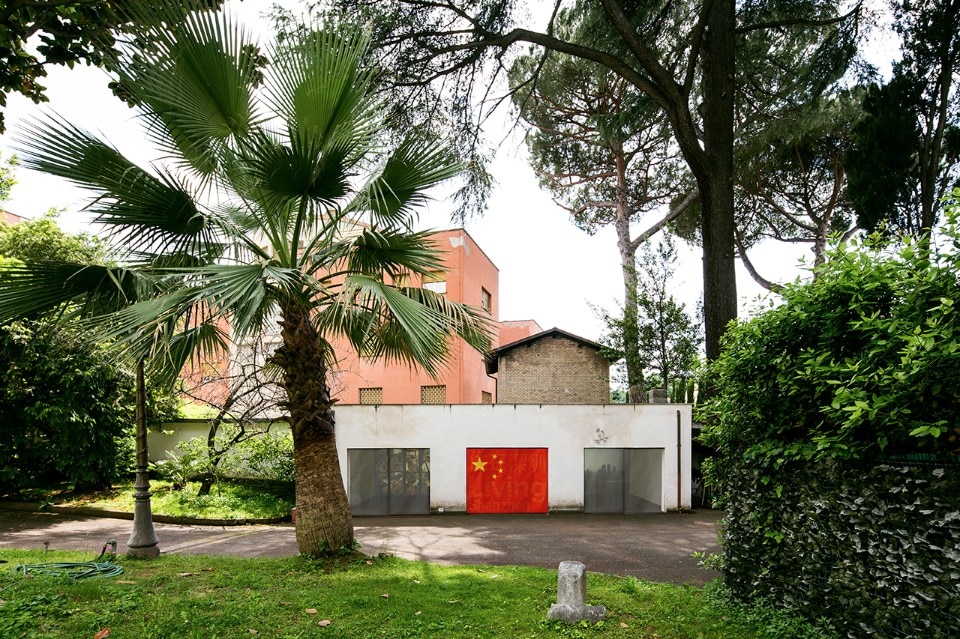
How many and which subjects have you involved in mapping the city?
We involved a small sample of students from Shenzhen University. Divided into local and international students, in equal numbers between men and women. Altogether we involved about ten nationalities. Many students come from faculties related to research topics (urban planning, big data, architecture, geography, etc.). But we advanced a proposal for a method rather than a completed survey on the subject, so the sample is clearly partial.
Is there also the hypothesis of mapping green areas or routes made by local fauna?
As for the green areas it is absolutely possible to hypothesize one because the method allows for wide fields of application. We exclude, however, the analysis of the local fauna routes because the eye-tracker technology today cannot be applied in a coercive way on animals, but must be worn as a pair of glasses (very delicate and expensive, by the way!).
What kind of glasses have you used?
Eye-tracking glasses, whose data were first deposited in a tablet on the field, then analyzed through a software supplied by the University of Shenzhen, so the glasses only serve to collect data. We used a European product, top of the range, made by Tobii and supplied by Psytech, a player based in Shanghai, always in collaboration with the University of Shenzhen. The companies that produce this hardware are very few. For this research we turned to those who guaranteed higher performances in the use of the device outdoors. Exposed to direct sunlight, these hardware are still critical and have considerable room for improvement with regard to the reliability of outdoor caption.
What mapping criteria did you use?
We carefully selected a number of areas that had in common a plurality of urban layers, in particular the Urban Villages and the generic layer, a phenomenon typical of Shenzhen and Chinese metropolitan areas. We identified five areas in the Futian district representative of this coexistence between Urban Villages and the generic city and for each area we invited volunteers to walk freely within these areas. We have mostly recorded in the morning, on weekdays.
What is the purpose of this work?
We are trying to understand what attracts our gaze when we interact in the metropolitan area and how this influences the subjective perception of the city. The goal is to stop a logic that is no longer sustainable or tolerable of top-down urban planning, and to outline a method that can incorporate experiential and sensory aspects into the planning process.
Have the results confirmed expectations or they revealed something new?
They confirmed a distinct mode of interaction, between people and the urban environment, in the different layers of the city (as well as specific subjective differentiations). This intuition, until now empirically supported by illustrious architects such as Lynch and Rossi among others, is finally quantifiable, therefore objectively demonstrable, and more easily inserted in planning processes that involve the use of numerical parameters (eg: BIM technology). The road is still long, but we can say that the threshold has been crossed.
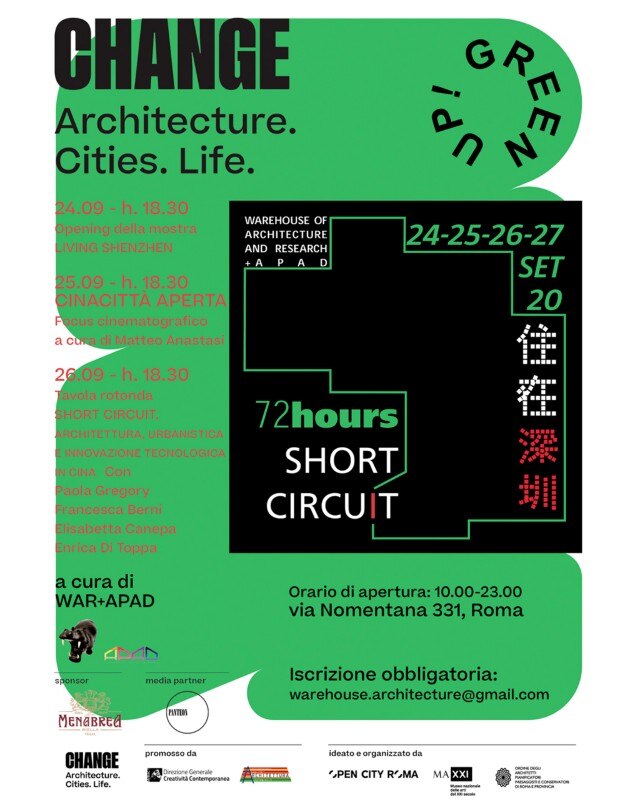
Was the research born from an explicit request from the local administration?
Although UABB has this vocation to make new technology interact with the urban environment, the proposal came spontaneously, it has received great interest from the University of Shenzhen and UABB insiders. Unfortunately, with the health crisis, first in China and then in Italy, we were not able to follow up some possible immediate developments. We hope to continue what has been interrupted as soon as possible.
How do you intend to realize – practically – this project? How does it fit into urban policies?
In an ideal world, the most pragmatic way to include it in “concrete” urban planning would be to make it an essential regulatory tool, once its effectiveness as a design tool has been demonstrated. We are still a long way from such a scenario, it is necessary to lay the foundations for pilot projects, which are becoming increasingly reliable.
What are the peculiarities of Shenzen? And the next cities that you will consider?
Shenzhen, together with the entire PRD area (Pearl River Delta), is an extraordinary city. It grows at a staggering pace, we are a group of globetrotters architects, but we have never seen such a reality before. They’re constantly self-sacrificing in building the city of tomorrow. The peculiarity is certainly this cluster of incoherent but paradoxically balanced urban fabrics, a complexity typical of a much more mature urban geography, obtained here in less than fifty years of history. Next cities: by reshaping the method it could be any city. There are some conditions that we would like to explore further: post-trauma cities, port cities, enclave cities.
Can you tell us what roles MIT and CNR have played respectively?
WAR became director of research but needed the know-how and tools of research institutes. MIT participated with the Senseable City Lab, a laboratory specialized in research on the city through advanced technology, and together with CNR it was indispensable in the processing of data collection by eye-trackers. In this phase it was also crucial the contribution of the University of Big Data in Shenzhen.
What is your relationship (if there is any) with informal cities whose essence depends on the free use and construction of space?
As a studio based in Rome, the city is a founding theme for us. The dynamics of development that regulate the urban conformation exalt us. Rather than informal cities, we are interested in the relationship that is established between object and narrative, project and individual, society and communication. Shenzhen in this has proved to be ideal. A hyper anthropized agglomeration, containing more cities within it. An alternating current megalopolis that in an apparently random way repeats itself with a certain exactitude. We were interested in the juxtaposition/collision between these different natures.
What is the difference between planning the city according to data (the sensors of the smart glasses) and planning it according to wishes (expressed through neighborhood assemblies, etc.)?
The data translates desires in a less arbitrary way than it has already been done too many times. The turning point is Big Data, the logic that guides them. Having a very large amount of quantitative data available allows to obtain very precise information, once obtainable only with qualitative research methods but very expensive and time consuming. The boundary between these two research methods that were once irreconcilable and that determined an inversely proportional relationship between data specificity and data quantity is getting thinner and thinner. The usual problem between induced or deduced participation.
How does your research, born in pre-pandemic times, relate to global events related to covid-19?
This is a problematic question. It would be interesting, first of all, to go back to Shenzhen and repeat the same research after the health emergency. This emergency has emphasized some critical issues, accelerating a change of perspective on several crucial issues, among which there is certainly that of anthropized spaces.
The research was conceived and carried out before all this global pandemic happened, inevitably we then felt the need to stop and think. We were in China, until recently, experimenting with a new method of perception and analysis of the city. We were completely immersed in a metropolis that amazed us in every corner. Then we moved on to life indoors during the lockdown, while all of humanity lived digitally in a non-city called the internet. We almost had the feeling that cities could disappear. The clear thing is that the city remains the place of human interactions in the field of reality, so quantifying it, this reality, is essential.
We believe that “Living Shenzhen” can be a forerunner of some dynamics from now on no longer obvious, including the involvement of eye-tracker technology, to optimize the expectations of the city of tomorrow. We keep a snapshot of a city that will probably never be the same again.
- Event:
- 72 hours short circuit
- Exhibition title:
- Living Shenzhen
- Curated by:
- WAR - Warehouse of Architecture and Research (Gabriele Corbo, Jacopo Costanzo, Valeria Guerrisi) + Paolo Santi
- Opening dates:
- 24-27 September 2020
- Where:
- Garage, Via Nomentana 331, Rome
- Promoted by:
- DGCC- MiBACT, conceived and organised by Open City Roma, MAXXI and Ordine degli Architetti PPC di Roma e provincia


